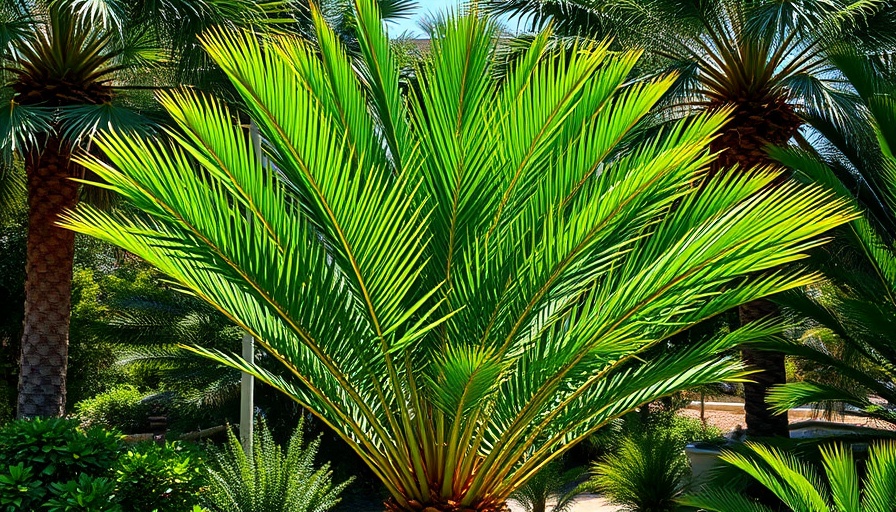
Uncover the Secrets of the European Fan Palm
The Mediterranean fan palm, scientifically known as Chamaerops humilis, offers a unique blend of resilience and aesthetic appeal. Originating from the western Mediterranean Basin, this remarkable palm thrives in a variety of environments, demonstrating its adaptability to both extreme heat and drought. Its hardiness even allows it to withstand cold temperatures down to about 10°F, making it a viable option for gardens in USDA Hardiness Zones 8 to 11.
Why Choose the Mediterranean Fan Palm for Your Garden?
One of the most compelling reasons to consider the European fan palm is its striking appearance. With fanned leaves that can grow up to three feet wide, this palm creates a lush, tropical feel in any landscape. Ideal for accent plants, patio decor, or even rock gardens, the Mediterranean fan palm can be part of a beautiful landscaping design that encourages outdoor living. Additionally, it thrives in various soil types and necessitates minimal fuss concerning moisture, making it suitable for gardeners with busy lifestyles.
Essential Care Tips for Your Mediterranean Fan Palm
While this palm is generally low-maintenance, certain care tips can enhance its growth. Position it in a sunny area with well-drained soil, maintaining a slightly acidic to slightly alkaline pH (between 6.0 and 8.0). Regular pruning not only helps maintain its shape but also prevents pest issues that can arise from overcrowded fronds. Check for signs of pests like spider mites or scale, as keeping your palm healthy minimizes these threats.
Propagation: Growing Your Own Mediterranean Fan Palms
For those looking to expand their gardens with additional European fan palms, propagation can be done through seed or division. Seeds should be sown in a well-draining soil mix, while division is best performed in the spring, allowing established plants to flourish in their new environments. This practical aspect of plant care makes the Mediterranean fan palm appealing for gardening projects, inviting enthusiasts to engage in hands-on gardening activities.
Creative Uses in Garden Design
Imagine strolling through your backyard, greeted by the elegant arch of fan-shaped fronds swaying in the breeze. The Mediterranean fan palm can serve as a picturesque backdrop for seating areas or as a striking border around garden paths. Its versatility extends to container gardening as well; simply relocate potted specimens indoors during colder months. As you plan your garden layout, consider incorporating features like garden art, lighting, and water features that harmonize with the simple beauty of this palm.
Environmental Adaptability and Benefits
Not only is the European fan palm beautiful, but it's also beneficial for the environment. Its ability to adapt to diverse settings ensures it can support local wildlife and create eco-friendly garden spaces. By selecting this palm and other native plants, gardeners can promote biodiversity, attracting pollinators and birds, which play crucial roles in maintaining healthy ecosystems.
Final Thoughts: Embracing the Mediterranean Spirit
The Mediterranean fan palm encapsulates the charm of the Mediterranean coast right in your backyard. Additionally, by integrating practices like organic gardening and sustainable landscaping, you enrich your gardening experience, nurturing both plants and the environment. As you embark on your journey of plant care and garden creation, let the flair of the European fan palm inspire your landscape.
To further your gardening adventure with Mediterranean fan palms and other plants, explore local resources, engage with fellow gardening enthusiasts, and experiment with new techniques. Your garden today can blossom into the serene outdoor retreat you've always envisioned.
 Add Row
Add Row  Add
Add 




Write A Comment